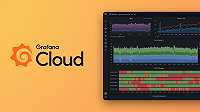otelcol.receiver.faro
EXPERIMENTAL: This is an experimental component. Experimental components are subject to frequent breaking changes, and may be removed with no equivalent replacement. To enable and use an experimental component, you must set the
stability.levelflag toexperimental.
otelcol.receiver.faro accepts telemetry data from the Grafana Faro Web SDK and forwards it to other otelcol.* components.
You can specify multiple otelcol.receiver.faro components by giving them different labels.
Note
This component is necessary for Grafana Cloud Frontend Observability to work. For more information, refer to the Choose a component guide.
Note
otelcol.receiver.farois a wrapper over the upstream OpenTelemetry Collectorfaroreceiver. Bug reports or feature requests will be redirected to the upstream repository, if necessary.
Usage
otelcol.receiver.faro "<LABEL>" {
output {
logs = [...]
traces = [...]
}
}Arguments
You can use the following arguments with otelcol.receiver.faro:
| Name | Type | Description | Default | Required |
|---|---|---|---|---|
endpoint | string | host:port to listen for traffic on. | "localhost:8080" | no |
max_request_body_size | string | Maximum request body size the server will allow. | "20MiB" | no |
include_metadata | bool | Propagate incoming connection metadata to downstream consumers. | false | no |
read_timeout | duration | Read timeout for requests of the HTTP server. | "60s" | no |
compression_algorithms | list(string) | A list of compression algorithms the server can accept. | ["", "gzip", "zstd", "zlib", "snappy", "deflate", "lz4"] | no |
auth | capsule(otelcol.Handler) | Handler from an otelcol.auth component to use for authenticating requests. | no |
By default, otelcol.receiver.faro listens for HTTP connections on localhost.
To expose the HTTP server to other machines on your network, configure endpoint with the IP address to listen on, or 0.0.0.0:8080 to listen on all network interfaces.
Blocks
You can use the following blocks with otelcol.receiver.faro:
| Block | Description | Required |
|---|---|---|
output | Configures where to send received telemetry data. | yes |
cors | Configures CORS for the HTTP server. | no |
debug_metrics | Configures the metrics that this component generates to monitor its state. | no |
tls | Configures TLS for the HTTP server. | no |
tls > tpm | Configures TPM settings for the TLS key_file. | no |
The > symbol indicates deeper levels of nesting.
For example, tls > tpm refers to a tpm block defined inside a tls block.
output
RequiredThe output block configures a set of components to forward resulting telemetry data to.
The following arguments are supported:
| Name | Type | Description | Default | Required |
|---|---|---|---|---|
logs | list(otelcol.Consumer) | List of consumers to send logs to. | [] | no |
metrics | list(otelcol.Consumer) | List of consumers to send metrics to. | [] | no |
traces | list(otelcol.Consumer) | List of consumers to send traces to. | [] | no |
You must specify the output block, but all its arguments are optional.
By default, telemetry data is dropped.
Configure the metrics, logs, and traces arguments accordingly to send telemetry data to other components.
cors
The cors block configures CORS settings for an HTTP server.
The following arguments are supported:
| Name | Type | Description | Default | Required |
|---|---|---|---|---|
allowed_origins | list(string) | Allowed values for the Origin header. | [] | no |
allowed_headers | list(string) | Accepted headers from CORS requests. | ["X-Requested-With"] | no |
max_age | number | Configures the Access-Control-Max-Age response header. | 0 | no |
The allowed_headers argument specifies which headers are acceptable from a CORS request.
The following headers are always implicitly allowed:
AcceptAccept-LanguageContent-TypeContent-Language
If allowed_headers includes "*", all headers are permitted.
debug_metrics
The debug_metrics block configures the metrics that this component generates to monitor its state.
The following arguments are supported:
| Name | Type | Description | Default | Required |
|---|---|---|---|---|
disable_high_cardinality_metrics | boolean | Whether to disable certain high cardinality metrics. | true | no |
disable_high_cardinality_metrics is the Alloy equivalent to the telemetry.disableHighCardinalityMetrics feature gate in the OpenTelemetry Collector.
It removes attributes that could cause high cardinality metrics.
For example, attributes with IP addresses and port numbers in metrics about HTTP and gRPC connections are removed.
Note
If configured,
disable_high_cardinality_metricsonly applies tootelcol.exporter.*andotelcol.receiver.*components.
tls
The tls block configures TLS settings used for a server.
If the tls block isn’t provided, TLS won’t be used for connections to the server.
The following arguments are supported:
| Name | Type | Description | Default | Required |
|---|---|---|---|---|
ca_file | string | Path to the CA file. | no | |
ca_pem | string | CA PEM-encoded text to validate the server with. | no | |
cert_file | string | Path to the TLS certificate. | no | |
cert_pem | string | Certificate PEM-encoded text for client authentication. | no | |
cipher_suites | list(string) | A list of TLS cipher suites that the TLS transport can use. | [] | no |
client_ca_file | string | Path to the TLS cert to use by the server to verify a client certificate. | no | |
curve_preferences | list(string) | Set of elliptic curves to use in a handshake. | [] | no |
include_system_ca_certs_pool | boolean | Whether to load the system certificate authorities pool alongside the certificate authority. | false | no |
key_file | string | Path to the TLS certificate key. | no | |
key_pem | secret | Key PEM-encoded text for client authentication. | no | |
max_version | string | Maximum acceptable TLS version for connections. | "TLS 1.3" | no |
min_version | string | Minimum acceptable TLS version for connections. | "TLS 1.2" | no |
reload_interval | duration | The duration after which the certificate is reloaded. | "0s" | no |
If reload_interval is set to "0s", the certificate never reloaded.
The following pairs of arguments are mutually exclusive and can’t both be set simultaneously:
ca_pemandca_filecert_pemandcert_filekey_pemandkey_file
If cipher_suites is left blank, a safe default list is used.
Refer to the Go Cipher Suites documentation for a list of supported cipher suites.
client_ca_file sets the ClientCA and ClientAuth to RequireAndVerifyClientCert in the TLSConfig.
Refer to the Go TLS documentation for more information.
The curve_preferences argument determines the set of elliptic curves to prefer during a handshake in preference order.
If not provided, a default list is used.
The set of elliptic curves available are X25519, P521, P256, and P384.
tpm
The tpm block configures retrieving the TLS key_file from a trusted device.
The following arguments are supported:
| Name | Type | Description | Default | Required |
|---|---|---|---|---|
auth | string | The authorization value used to authenticate the TPM device. | "" | no |
enabled | bool | Load the tls.key_file from TPM. | false | no |
owner_auth | string | The owner authorization value used to authenticate the TPM device. | "" | no |
path | string | Path to the TPM device or Unix domain socket. | "" | no |
The trusted platform module (TPM) configuration can be used for loading TLS key from TPM. Currently only TSS2 format is supported.
The path attribute is not supported on Windows.
Example
otelcol.example.component "<LABEL>" {
...
tls {
...
key_file = "my-tss2-key.key"
tpm {
enabled = true
path = "/dev/tpmrm0"
}
}
}In the above example, the private key my-tss2-key.key in TSS2 format will be loaded from the TPM device /dev/tmprm0.
Exported fields
otelcol.receiver.faro doesn’t export any fields.
Component health
otelcol.receiver.faro is only reported as unhealthy if given an invalid configuration.
Debug information
otelcol.receiver.faro doesn’t expose any component-specific debug information.
Examples
This example forwards received telemetry through a batch processor before finally sending it to an OTLP-capable endpoint:
otelcol.receiver.faro "default" {
output {
logs = [otelcol.processor.batch.default.input]
traces = [otelcol.processor.batch.default.input]
}
}
otelcol.processor.batch "default" {
output {
logs = [otelcol.exporter.faro.default.input]
traces = [otelcol.exporter.faro.default.input]
}
}
otelcol.exporter.faro "default" {
client {
endpoint = "<FARO_COLLECTOR_ADDRESS>"
}
}Replace the following:
<FARO_COLLECTOR_ADDRESS>: The address of the Faro-compatible server to send data to.
Enable TLS
You can configure otelcol.receiver.faro to use TLS for added security:
otelcol.receiver.faro "default" {
endpoint = "localhost:8443"
tls {
cert_file = "/path/to/cert.pem"
key_file = "/path/to/key.pem"
}
output {
logs = [otelcol.processor.batch.default.input]
traces = [otelcol.processor.batch.default.input]
}
}Enable authentication
You can create a otelcol.receiver.faro component that requires authentication for requests.
This is useful for limiting who can push data to the server.
Note
Not all OpenTelemetry Collector authentication plugins support receiver authentication. Refer to the documentation for each
otelcol.auth.*component to determine its compatibility.
otelcol.receiver.faro "default" {
auth = otelcol.auth.basic.creds.handler
output {
logs = [otelcol.processor.batch.default.input]
traces = [otelcol.processor.batch.default.input]
}
}
otelcol.auth.basic "creds" {
username = sys.env("FARO_USERNAME")
password = sys.env("FARO_PASSWORD")
}Configure CORS
You can configure CORS settings to allow web applications to send telemetry data from browsers:
otelcol.receiver.faro "default" {
cors {
allowed_origins = ["https://my-webapp.example.com", "https://staging.example.com"]
allowed_headers = ["Content-Type", "X-Custom-Header"]
max_age = 3600
}
output {
logs = [otelcol.processor.batch.default.input]
traces = [otelcol.processor.batch.default.input]
}
}Compatible components
otelcol.receiver.faro can accept arguments from the following components:
- Components that export OpenTelemetry
otelcol.Consumer
Note
Connecting some components may not be sensible or components may require further configuration to make the connection work correctly. Refer to the linked documentation for more details.



